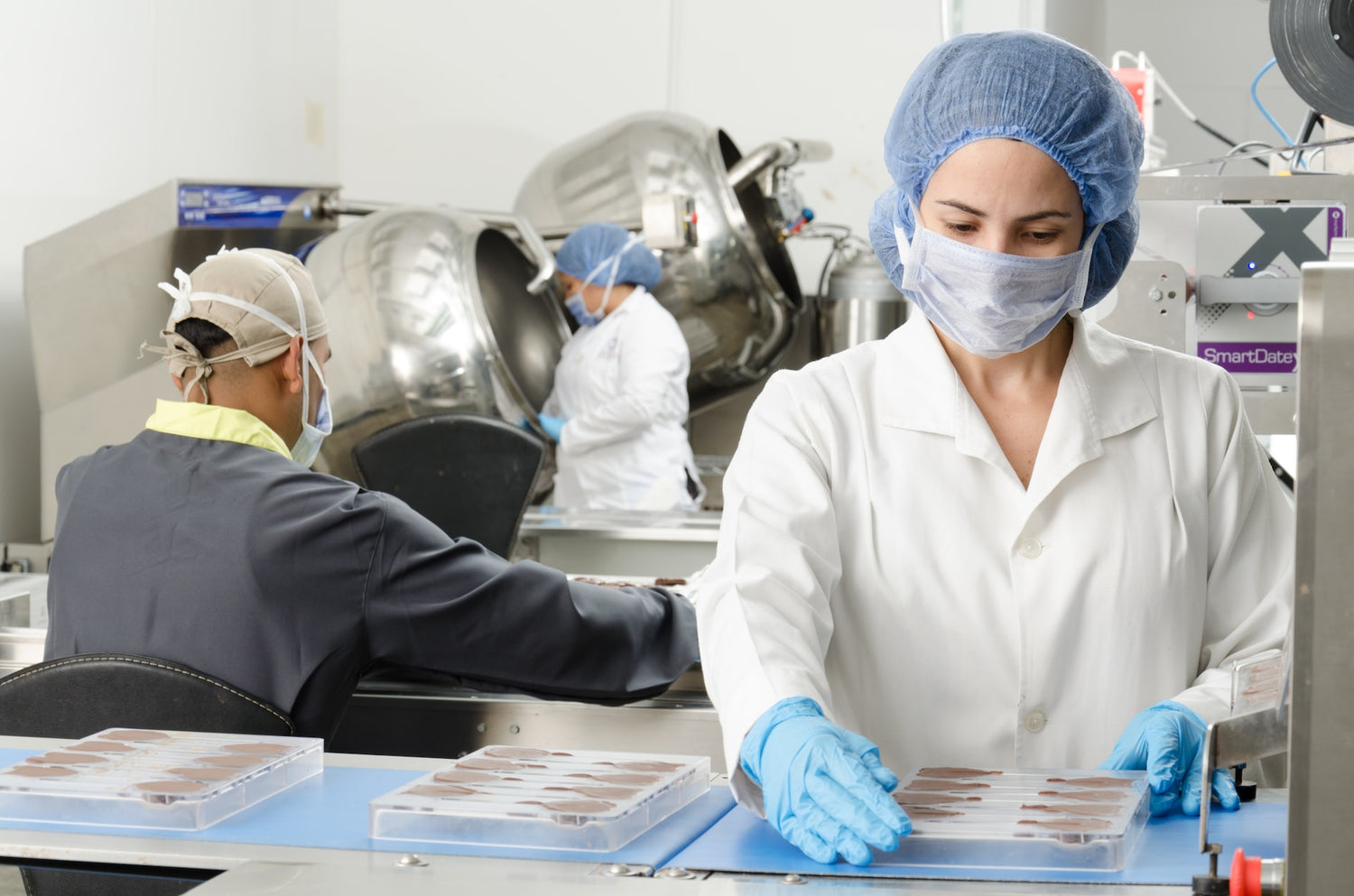Millions of people worry about losing their hair. It's a common concern that can affect how we feel about ourselves. RU58841 has caught the attention of researchers as a possible solution to this problem. This blog is all about looking at what science says about RU58841 and whether it really works for hair loss.
We want to help you understand if RU58841 could be a meaningful option for those struggling with hair loss. It's a serious topic, and we're here to explore it in a simple way.
What is RU58841?
RU58841 is a non-steroidal anti-androgen compound that has been investigated for its potential use in treating hair loss, specifically androgenetic alopecia (pattern baldness). It works by blocking the effects of androgens, which are hormones that play a role in hair loss.
Androgens, such as dihydrotestosterone (DHT), can contribute to hair follicle miniaturization and eventual hair loss in individuals genetically predisposed to androgenetic alopecia. RU58841 is thought to inhibit the binding of DHT to hair follicles, potentially slowing down or preventing hair loss.

How did RU58841 come to be?
Well, back in the 1970s, a French company named Roussel Uclaf had this idea to create RU58841. They wanted a powerful medicine that you could put on your skin to help with acne and hair loss, without causing problems in the rest of your body. They started making it in the 1980s, but most of the research happened in the 1990s.
Scientists tested it on rats and hamsters, and the results looked really good. Even tiny amounts, like 0.001 milligrams, worked well. Even when they used more, up to 0.01 milligrams, it still only did its thing where they put it – a big win for the researchers.
After some back and forth with different companies, ProStraken took charge, renaming it PSK3841. They did two trials on people (phase 1 and phase 2), applying a 5% solution for a few weeks and comparing it to a placebo and other strengths for six months. It seemed to work well, but they never published the results.
ProStraken planned a phase 3 trial, but the project got canceled when a Japanese company called Kyowa Kurin bought them out. Money issues, you know?
After that, no human studies happened for over ten years. They did some monkey studies, though. One compared RU58841 to finasteride, and the RU58841 group had better hair growth. Another study looked at RU58841 on human hair put on mice, but it's been a while since any direct human studies, so the FDA hasn't approved it for anything yet.
Study 1: The Impact of RU58841 on Human Hair Production
The researchers conducted a controlled experiment using a unique model involving the transplantation of scalp samples from men with androgen-dependent alopecia onto female nude mice conditioned with testosterone.
Methodology:
- Sample Selection: Twenty productive scalp grafts from balding men were monitored for 8 months after grafting onto nude mice.
- Testosterone Conditioning: All mice received topical testosterone application on the non-grafted flank to mimic androgen-dependent conditions.
- Group Division: Scalp samples were equally divided based on estimated hair production potential before grafting.
- Treatment Allocation: Two equal groups were randomly assigned to receive either RU58841 1% in ethanol (treatment group) or ethanol alone (control group) topically, 5 days a week.
Results:
- Control Group: Among the 10 control grafts, only two follicles (7%) initiated a second hair cycle, with a total of 28 active follicles observed.
- RU58841-Treated Group: The 10 RU58841-treated grafts showed a total of 29 active follicles, and eight of them (28%) exhibited a second cycle.
- Linear Hair Growth Rates (LHGR): The RU58841-treated group demonstrated significantly higher LHGR values (P < 0.04) compared to the control group.
Conclusion
The findings suggest a positive impact of RU58841 on human hair growth from balding samples grafted onto testosterone-conditioned nude mice. The increased follicle activity, initiation of second hair cycles, and higher linear hair growth rates indicate potential efficacy. The study encourages further exploration through clinical trials to assess RU58841's viability in treating androgen-dependent alopecia. Source
Study 2: Hair Growth with Finasteride and RU58841
This research, done by Uno and team, compared two hair loss treatments in 20 macaques (monkeys). They studied oral finasteride and topical RU58841 to see which one helped hair grow better.
Method:
- Groups: They divided the macaques into two groups – 10 got finasteride pills, and 10 had RU58841 applied on their skin.
- Time and Biopsies: They checked the monkeys at different times – zero and six months for finasteride, and zero and four months for RU58841. They took small pieces of skin for testing.
- Measuring Hair Growth: They counted healthy growing hairs by looking at anagen follicles compared to vellus follicles.
Results:
Hair Growth:
- Finasteride group had an 88% increase in healthy hair growth.
- RU58841 group showed a big 103% increase, and it worked faster in just two months.
Hormone Levels:
- Finasteride reduced DHT levels and increased testosterone.
- RU58841 didn’t change DHT and testosterone levels.
Conclusion
The study concluded that RU58841, the topical treatment, was better at making hair grow than oral finasteride. It also had different effects on hormones. RU58841, by blocking androgen receptors, showed more promise in helping with hair loss compared to finasteride, which works on enzymes in the body. Source

Study 3: Dose-Dependent and Long-Term Effects of RU58841 on Hair Regrowth
After the encouraging findings in the initial study, Uno et al. conducted a follow-up study to explore the impact of different dosages of RU58841 on hair regrowth in 20 macaques. The researchers divided the macaques into five groups, each receiving different percentages of RU58841, and one placebo group. They applied the solutions topically once a day for 6 months, with a subset continuing treatment for an extended period.
Methodology:
- Participant Groups: 20 macaques were split into five groups with RU58841 dosages of 5%, 3%, 1%, 0.5%, and a placebo group.
- Application: Topical solutions were applied daily for 6 months.
- Long-Term Treatment: Three monkeys from the 5%, 0.5%, and placebo groups continued treatment for 12 to 24 months to evaluate long-term effects.
Results:
5% RU58841 Group:
- Marked increase in hair density, thickness, and length.
- Significant improvements observed as early as three months into treatment.
- Two- to three-fold increase in the number of scalp follicles after 5 months.
- Increased follicles in the anagen growth phase.
Other Dosages:
- Weaker results in the 1% and 0.5% groups compared to the 5% group.
- Noticeable growth in all groups, but none as promising as the 5% group.
Long-Term Treatment (5% Group):
- Continuous progressive hair growth for 3-7 months.
- Hair loss resumed approximately three months after treatment cessation.
0.5% Group:
- Minimal noticeable effects, with no significant progression.
The study concluded that a 5% topical application of RU58841 induced remarkable and rapid effects on hair and follicular regrowth. The gains were significant, including increased density, thickness, and length of hair.
Furthermore, the long-term use of RU58841 maintained these positive effects, with continuous progressive hair growth for an extended period. However, once the treatment was stopped, hair loss resumed. Lower dosages, particularly 0.5%, showed minimal effects, emphasizing the dose-dependent nature of RU58841's efficacy in promoting hair regrowth.
Human Trials Conducted by Prostrakan on RU58841
Phase I Study
Prostrakan, the eventual rights holder of RU58841, initiated a Phase I clinical trial in France during the early 2000s. The primary focus of this study was to evaluate the safety of RU58841. Thirty men experiencing male pattern baldness were recruited, and they applied a 5% solution of RU58841 to their scalps twice daily for a duration of 4 weeks. Despite the absence of published results, available information suggests that the outcomes were positive, paving the way for further investigation.
Phase II Trial
Building on the promising outcomes of the Phase I study, Prostrakan proceeded with a Phase II clinical trial involving 120 balding men. This trial aimed to compare the effects of RU58841 against a placebo, utilizing two different strengths: 2.5% and 5% solutions. The participants were subjected to the treatments for over 6 months. Unfortunately, similar to the Phase I study, the full results of this Phase II trial were not published.
According to unofficial leaks, the results were purportedly comparable to, if not better than, finasteride, a commonly prescribed medication for hair loss. Finasteride works by inhibiting the enzyme responsible for converting testosterone into dihydrotestosterone (DHT), a hormone associated with hair loss.
Planned Phase III Trial and Unresolved Issues
Despite the positive outcomes of the Phase II trial, Prostrakan's plans to proceed with a Phase III trial never materialized. The reasons behind this decision remain unclear. Some speculations suggest that RU58841 may face challenges related to stability and limited shelf life, making it less practical for widespread use. Alternatively, there are suggestions that Prostrakan might have deemed the compound economically unviable for further development.
The lack of published results and the discontinuation of the Phase III trial contribute to the mystery surrounding RU58841's potential as a hair loss treatment. While the compound showed promise in early clinical trials, its journey towards becoming a mainstream solution for male pattern baldness was halted for reasons that are yet to be fully elucidated.
Common Trends in RU58841 Studies
Across these studies, RU58841 consistently showed positive effects on hair growth, including increased density, thickness, and length. Notably, higher concentrations, particularly the 5% dosage in macaque studies, displayed remarkable results in a relatively short period.

Broader Implications for RU58841 in Hair Loss Treatment
RU58841, with its mechanism of androgen receptor blocking, could potentially serve as an alternative or complement to existing hair loss treatments like finasteride. Despite positive indications, challenges such as stability issues and a limited shelf life have been suggested as potential hindrances to its clinical application. The decision by Prostrakan to discontinue the Phase III trial raises questions about the compound's commercial viability.
Considerations for Clinical Application
The overall trends underscore the need for more comprehensive and transparent research, particularly in human trials, to conclusively establish RU58841's safety, efficacy, and long-term effects. It presents itself as a promising candidate for further exploration, but uncertainties remain regarding its commercial viability and practical application in treating hair loss.
In conclusion, RU58841 exhibits promising trends in promoting hair regrowth. Continued research is essential to address existing uncertainties and propel it towards becoming a viable option for individuals dealing with hair loss.
Potential Side Effects and Risks of RU58841
It's important to think about possible side effects and risks when using RU58841. While some users have reported few issues, we don't have a complete understanding of its safety yet, especially in humans. More research is needed to fully grasp any potential risks.
Research Gaps
There are gaps in what we know about RU58841. Limited data, especially from human trials, makes it hard to judge its safety and effectiveness fully. We also need more information about the long-term effects and potential risks with extended use. Filling in these gaps is crucial for making RU58841 a reliable and safe solution for hair loss.
In summary, while RU58841 seems promising, we need to consider its potential side effects, follow ethical practices, adhere to regulations, and fill in the existing gaps through more research to truly understand its usefulness for treating hair loss.
Conclusion
At MV Supplement, we offer 100% authentic RU58841, a possible solution for people dealing with hair loss. We make sure that what you get is genuine and effective. Our service covers all of Europe, so you can count on us for a reliable and quick delivery to your door.
If you're looking for a way to tackle hair loss and want a trustworthy product, MV Supplement is here for you. Ordering authentic RU58841 from our store is easy and can be a step towards having healthier hair.



Leave a comment
This site is protected by hCaptcha and the hCaptcha Privacy Policy and Terms of Service apply.